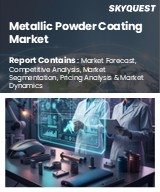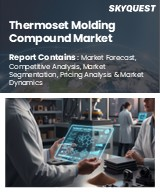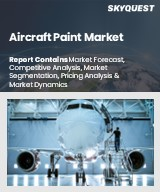
|
시장보고서
상품코드
1575503
세계의 에폭시 툴링 보드 시장 : 제품 유형, 최종 이용 산업, 용도, 밀도, 판매 채널, 최종 사용자별 예측(2025-2030년)Epoxy Tooling Board Market by Product Type, End-Use Industry, Application, Density, Sales Channel, End-User - Global Forecast 2025-2030 |
||||||
에폭시 툴링 보드 시장은 2023년에 13억 2,000만 달러로 평가되었고, 2024년에는 14억 3,000만 달러에 이를 것으로 예측되며, CAGR 8.73%로 성장해 2030년에는 23억 8,000만 달러에 달할 것으로 예상됩니다.
에폭시 툴링 보드는 치수 안정성이 높고 고온 및 화학제품에 대한 내성이 우수하기 때문에 다양한 산업에서 중요한 역할을 하고 있습니다. 주로 자동차, 항공우주, 해양, 풍력에너지 분야에서 필수적인 내구성 있는 금형, 모델, 프로토타입을 만드는데 사용되며, 광범위한 용도와 최종 용도의 범위가 강조됩니다. 에폭시 툴링 보드의 필요성은 복잡한 설계와 고정밀도가 요구되는 소량 생산 및 프로토 타이핑에 정밀하고 비용 효율적인 솔루션을 제공하는 능력으로 인해 발생합니다. 시장에 영향을 미치는 주요 성장 요인으로는 생산 기술의 급속한 진보, 항공우주 산업 및 자동차 산업에서 가볍고 효율적인 재료 채택 증가, 재생 가능 에너지 솔루션, 특히 터빈 블레이드에 에폭시 기반 복합재료 을 이용하는 풍력에너지에 대한 수요 증가 등을 들 수 있습니다.
| 주요 시장 통계 | |
|---|---|
| 기준년(2023) | 13억 2,000만 달러 |
| 예측년(2024) | 14억 3,000만 달러 |
| 예측년(2030) | 23억 8,000만 달러 |
| CAGR(%) | 8.73% |
이 시장의 기회는 환경 기준 증가에 대응하기 위해 지속 가능한 생산 공정에 초점을 맞추고 열적 및 기계적 특성을 강화한 혁신적인 제품을 개발함으로써 잡을 수 있습니다. 크기와 등급을 사용자 정의함으로써 다양화하는 최종 용도의 요구에 부응할 수 있어 큰 경쟁력을 기대할 수 있습니다. 그러나 시장 성장은 초기 비용의 높이와 에폭시 및 폴리 우레탄과 같은 원재료 가격 변동의 영향을 받기 쉽다는 문제에 직면 해 있습니다. 또한, 특정 용도에서는 알루미늄이나 실리콘과 같은 대체 재료와의 경쟁이 한계가 됩니다.
혁신은 바이오 및 재활용 가능한 에폭시 복합재료를 탐구함으로써 추진할 수 있습니다. 기계적 특성을 향상시키는 나노 강화 에폭시 보드를 조사하면 비즈니스 성장의 새로운 길을 열 수 있습니다. 에폭시 툴링 보드 시장은 보다 효율적이고 다재다능한 제품의 생산을 목표로 하는 강력한 R&D 능력을 특징으로 합니다. 고객 고유의 요구와 최신 기술의 진보를 이해하는 데 투자하는 기업이 시장을 선도하고 표준 솔루션과 맞춤형 솔루션을 모두 개발함으로써 향후 성장 단계를 마련할 가능성이 높습니다. 입니다. 연구기관과의 협업은 이러한 진화하는 시장 상황을 선점하는 효과적인 전략이 될 수 있습니다.
시장 역학: 빠르게 진화하는 에폭시 툴링 보드 시장의 주요 시장 인사이트 공개
에폭시 툴링 보드 시장은 수요 및 공급의 역동적 인 상호 작용에 의해 변모하고 있습니다. 이러한 시장 역학의 진화를 이해함으로써 기업은 충분한 정보를 바탕으로 투자결정, 전략적 결정 정밀화, 새로운 비즈니스 기회 획득에 대비할 수 있습니다. 이러한 동향을 종합적으로 파악함으로써 기업은 정치적, 지리적, 기술적, 사회적, 경제적 영역에 걸친 다양한 위험을 완화할 수 있으며, 소비자 행동과 그것이 제조 비용과 구매 동향에 미치는 영향을보다 명확하게 이해할 수 있습니다.
- 시장 성장 촉진요인
- 산업 제조 공정에서의 정확성과 정확성에 대한 요구 증가
- 다양한 용도에 있어서, 기존 금속 툴링보다 강화된 성능 특성
- 환경 친화적이고 지속 가능한 재료의 사용을 촉진하는 규제 요건
- 기술 혁신을 추진하기 위한 업계 주요 기업 간 협력과 파트너십 증가
- 시장 성장 억제요인
- 시장 성장과 가격 전략에 영향을 미치는 기존 기업 간의 치열한 경쟁
- 에폭시제 툴링 보드의 복잡한 제조 공정에 의한 제조 비용의 상승과 리드 타임의 장기화
- 시장 기회
- 해양 산업에 있어서의 고정밀 금형 제조용의 고도의 에폭시 툴링 보드
- 산업용 로봇 장치에 있어서 경량으로 내구성이 있는 지그용 에폭시 수지 툴링 보드
- 가전 산업에서의 고온 내성 금형용 에폭시 툴링 솔루션
- 시장의 과제
- 에폭시 툴링 보드 산업의 복잡한 규제 및 컴플라이언스 요건
- 에폭시 툴링 보드 제조용 고품질 원재료 조달난
Porter's Five Forces: 에폭시 툴링 보드 시장을 탐색하는 전략 도구
Porter's Five Forces 프레임 워크는 에폭시 툴링 보드 시장 경쟁 구도를 이해하는 중요한 도구입니다. Porter's Five Force Framework는 기업의 경쟁력을 평가하고 전략적 기회를 탐구하는 명확한 기술을 제공합니다. 이 프레임워크는 기업이 시장 내 세력도를 평가하고 신규 사업의 수익성을 판단하는 데 도움이 됩니다. 이러한 통찰을 통해 기업은 자사의 강점을 활용하고, 약점을 해결하고, 잠재적인 과제를 피할 수 있으며, 보다 강인한 시장에서의 포지셔닝을 보장할 수 있습니다.
PESTLE 분석 : 에폭시 툴링 보드 시장에서 외부로부터의 영향 파악
외부 거시적 환경 요인은 에폭시 툴링 보드 시장의 성과 역학을 형성하는데 매우 중요한 역할을 합니다. 정치적, 경제적, 사회적, 기술적, 법적, 환경적 요인 분석은 이러한 영향을 탐색하는 데 필요한 정보를 제공합니다. PESTLE 요인을 조사함으로써 기업은 잠재적인 위험과 기회를 더 잘 이해할 수 있습니다. 이 분석을 통해 기업은 규제, 소비자 선호, 경제 동향의 변화를 예측하고 앞으로 예상되는 적극적인 의사 결정을 할 준비를 할 수 있습니다.
시장 점유율 분석 : 에폭시 툴링 보드 시장 경쟁 구도 파악
에폭시 툴링 보드 시장의 상세한 시장 점유율 분석을 통해 공급업체의 성과를 종합적으로 평가할 수 있습니다. 기업은 수익, 고객 기반, 성장률 등 주요 지표를 비교하여 경쟁 포지셔닝을 밝힐 수 있습니다. 이 분석을 통해 시장 집중, 단편화, 통합 동향을 밝혀내고 벤더들은 경쟁이 치열해지는 가운데 자사의 지위를 높이는 전략적 의사 결정을 내리는 데 필요한 지식을 얻을 수 있습니다.
FPNV 포지셔닝 매트릭스 : 에폭시 툴링 보드 시장에서 공급업체의 성능 평가
FPNV 포지셔닝 매트릭스는 에폭시 툴링 보드 시장에서 공급업체를 평가하는 중요한 도구입니다. 이 행렬을 통해 비즈니스 조직은 공급업체의 비즈니스 전략과 제품 만족도를 기준으로 평가하여 목표에 맞는 충분한 정보를 바탕으로 의사 결정을 내릴 수 있습니다. 네 가지 사분면을 통해 공급업체를 명확하고 정확하게 세분화하여 전략 목표에 가장 적합한 파트너 및 솔루션을 파악할 수 있습니다.
전략 분석 및 권장 : 에폭시 툴링 보드 시장에서 성공에 대한 길을 그립니다.
에폭시 툴링 보드 시장의 전략 분석은 세계 시장에서의 존재를 강화하려는 기업에게 필수적입니다. 주요 자원, 역량 및 성과 지표를 검토함으로써 기업은 성장 기회를 파악하고 개선을 위해 노력할 수 있습니다. 이러한 접근 방식을 통해 경쟁 구도에서 과제를 극복하고 새로운 비즈니스 기회를 활용하여 장기적인 성공을 거둘 수 있는 체제를 구축할 수 있습니다.
이 보고서는 주요 관심 분야를 포괄하는 시장의 종합적인 분석을 제공합니다.
1. 시장 침투: 현재 시장 환경의 상세한 검토, 주요 기업의 광범위한 데이터, 시장 도달범위 및 전반적인 영향력 평가.
2. 시장 개척도: 신흥 시장의 성장 기회를 파악하고 기존 분야의 확장 가능성을 평가하며 미래 성장을 위한 전략적 로드맵을 제공합니다.
3. 시장 다양화: 최근 제품 출시, 미개척 지역, 업계의 주요 진보, 시장을 형성하는 전략적 투자를 분석합니다.
4. 경쟁 평가 및 정보 : 경쟁 구도를 철저히 분석하여 시장 점유율, 사업 전략, 제품 포트폴리오, 인증, 규제 당국 승인, 특허 동향, 주요 기업의 기술 진보 등을 검증합니다.
5. 제품 개발 및 혁신 : 미래 시장 성장을 가속할 것으로 예상되는 최첨단 기술, R&D 활동, 제품 혁신을 강조합니다.
또한 이해관계자가 충분한 정보를 얻고 의사결정을 할 수 있도록 중요한 질문에 대답하고 있습니다.
1. 현재 시장 규모와 향후 성장 예측은?
2. 최고의 투자 기회를 제공하는 제품, 부문 및 지역은 어디입니까?
3. 시장을 형성하는 주요 기술 동향과 규제의 영향은?
4. 주요 벤더의 시장 점유율과 경쟁 포지션은?
5. 벤더 시장 진입·철수 전략의 원동력이 되는 수익원과 전략적 기회는 무엇인가?
목차
제1장 서문
제2장 조사 방법
제3장 주요 요약
제4장 시장 개요
제5장 시장 인사이트
- 시장 역학
- 성장 촉진요인
- 산업 제조 공정에서의 정확성과 정확성에 대한 요구 증가
- 다양한 용도에 있어서 기존 금속 공구보다 뛰어난 성능 특성을 실현
- 환경 친화적이고 지속 가능한 재료의 사용을 촉진하는 규제 요건
- 혁신을 추진하기 위해 업계의 주요 기업 간의 협업과 파트너십을 강화한다
- 억제요인
- 기존 기업 간의 치열한 경쟁이 시장 성장과 가격 전략에 영향을 미칩니다
- 에폭시 툴링 보드의 제조 공정이 복잡하고, 생산 비용이 높고, 리드 타임이 길어진다
- 기회
- 해양 산업에서의 고정밀 금형 제작을 위한 선진적인 에폭시 툴링 보드
- 산업용 로봇 기기의 경량으로 내구성이 있는 고정구용의 에폭시 툴링 보드
- 가전 업계의 내고온 금형용 에폭시 툴 솔루션
- 과제
- 에폭시 툴링 보드 업계의 복잡한 규제 및 규정 준수 요건
- 에폭시 툴링 보드 제조를 위한 고품질 원재료의 조달이 곤란
- 성장 촉진요인
- 시장 세분화 분석
- Porter's Five Forces 분석
- PESTEL 분석
- 정치
- 경제
- 사교
- 기술
- 법률
- 환경
제6장 에폭시 툴링 보드 시장 : 제품 유형별
- 고온 에폭시 툴링 보드
- 저온 에폭시 툴링 보드
- 중온 에폭시 툴링 보드
제7장 에폭시 툴링 보드 시장 : 최종 이용 산업별
- 항공우주산업
- 자동차산업
- 주조와 공구
- 해양산업
- 풍력에너지
제8장 에폭시 툴링 보드 시장 : 용도별
- 복합 툴
- 모형 제작
- 패턴 메이킹
- 프로토타이핑
제9장 에폭시 툴링 보드 시장 : 밀도별
- 고밀도 에폭시 툴링 보드
- 저밀도 에폭시 툴링 보드
- 중밀도 에폭시 툴링 보드
제10장 에폭시 툴링 보드 시장 : 판매 채널별
- 직접 판매
- 대리점 판매
- 온라인 판매
제11장 에폭시 툴링 보드 시장 : 최종 사용자별
- 대기업
- 중소기업
제12장 아메리카 에폭시 툴링 보드 시장
- 아르헨티나
- 브라질
- 캐나다
- 멕시코
- 미국
제13장 아시아태평양의 에폭시 툴링 보드 시장
- 호주
- 중국
- 인도
- 인도네시아
- 일본
- 말레이시아
- 필리핀
- 싱가포르
- 한국
- 대만
- 태국
- 베트남
제14장 유럽·중동 및 아프리카의 에폭시 툴링 보드 시장
- 덴마크
- 이집트
- 핀란드
- 프랑스
- 독일
- 이스라엘
- 이탈리아
- 네덜란드
- 나이지리아
- 노르웨이
- 폴란드
- 카타르
- 러시아
- 사우디아라비아
- 남아프리카
- 스페인
- 스웨덴
- 스위스
- 터키
- 아랍에미리트(UAE)
- 영국
제15장 경쟁 구도
- 시장 점유율 분석 2023
- FPNV 포지셔닝 매트릭스, 2023
- 경쟁 시나리오 분석
- 전략 분석과 제안
The Epoxy Tooling Board Market was valued at USD 1.32 billion in 2023, expected to reach USD 1.43 billion in 2024, and is projected to grow at a CAGR of 8.73%, to USD 2.38 billion by 2030.
Epoxy tooling board serves as a crucial component in various industries due to its high dimensional stability and excellent resistance to high temperatures and chemicals. It is primarily used for creating durable molds, models, and prototypes, which are essential in automotive, aerospace, marine, and wind energy sectors, highlighting its wide application and end-use scope. The necessity of epoxy tooling boards arises from their ability to provide precise, cost-effective solutions for short-run production and prototyping, where intricate designs and high precision are required. Key growth factors influencing the market include the rapid advancements in production techniques, increased adoption of lightweight and efficient materials in the aerospace and automotive industries, and the rising demand for renewable energy solutions, particularly wind energy, which utilizes epoxy-based composites for turbine blades.
| KEY MARKET STATISTICS | |
|---|---|
| Base Year [2023] | USD 1.32 billion |
| Estimated Year [2024] | USD 1.43 billion |
| Forecast Year [2030] | USD 2.38 billion |
| CAGR (%) | 8.73% |
Opportunities in this market can be seized by focusing on sustainable production processes to meet the growing environmental standards and developing innovative products with enhanced thermal and mechanical properties. Customization in terms of sizes and grades can cater to diversified end-use requirements, promising a significant competitive edge. However, market growth faces challenges like high initial costs and susceptibility to price fluctuations of raw materials such as epoxies and polyurethanes. Additionally, competition from alternative materials like aluminum and silicone in certain applications poses a limitation.
Innovation can be driven by exploring bio-based and recyclable epoxy composites, which align with the growing emphasis on sustainability. Research into nano-enhanced epoxy boards that offer improved mechanical properties could open new avenues for business growth. The epoxy tooling board market is characterized by strong research and development dynamics, aimed at producing more efficient and versatile products. Companies that invest in understanding customer-specific needs and the latest technological advancements will likely lead the market, setting the stage for future growth in developing both standard and customized solutions. Collaboration with research institutions can be an effective strategy to stay ahead in this evolving market landscape.
Market Dynamics: Unveiling Key Market Insights in the Rapidly Evolving Epoxy Tooling Board Market
The Epoxy Tooling Board Market is undergoing transformative changes driven by a dynamic interplay of supply and demand factors. Understanding these evolving market dynamics prepares business organizations to make informed investment decisions, refine strategic decisions, and seize new opportunities. By gaining a comprehensive view of these trends, business organizations can mitigate various risks across political, geographic, technical, social, and economic domains while also gaining a clearer understanding of consumer behavior and its impact on manufacturing costs and purchasing trends.
- Market Drivers
- Increasing need for precision and accuracy in industrial manufacturing processes
- Enhanced performance characteristics over traditional metal tooling in various applications
- Regulatory requirements promoting the use of environmentally friendly and sustainable materials
- Increasing collaborations and partnerships among key industry players to drive innovation
- Market Restraints
- Intense competition among established players impacting market growth and pricing strategies
- Complex manufacturing process of epoxy tooling boards leading to high production costs and longer lead times
- Market Opportunities
- Advanced epoxy tooling boards for high-precision mold making in the marine industry
- Epoxy tooling boards for lightweight and durable fixtures in industrial robotics equipment
- Epoxy tooling solutions for high-temperature resistant molds in the consumer electronics industry
- Market Challenges
- Complex regulation and compliance requirements in the epoxy tooling board industry
- Difficulty in sourcing high-quality raw materials for epoxy tooling board manufacturing
Porter's Five Forces: A Strategic Tool for Navigating the Epoxy Tooling Board Market
Porter's five forces framework is a critical tool for understanding the competitive landscape of the Epoxy Tooling Board Market. It offers business organizations with a clear methodology for evaluating their competitive positioning and exploring strategic opportunities. This framework helps businesses assess the power dynamics within the market and determine the profitability of new ventures. With these insights, business organizations can leverage their strengths, address weaknesses, and avoid potential challenges, ensuring a more resilient market positioning.
PESTLE Analysis: Navigating External Influences in the Epoxy Tooling Board Market
External macro-environmental factors play a pivotal role in shaping the performance dynamics of the Epoxy Tooling Board Market. Political, Economic, Social, Technological, Legal, and Environmental factors analysis provides the necessary information to navigate these influences. By examining PESTLE factors, businesses can better understand potential risks and opportunities. This analysis enables business organizations to anticipate changes in regulations, consumer preferences, and economic trends, ensuring they are prepared to make proactive, forward-thinking decisions.
Market Share Analysis: Understanding the Competitive Landscape in the Epoxy Tooling Board Market
A detailed market share analysis in the Epoxy Tooling Board Market provides a comprehensive assessment of vendors' performance. Companies can identify their competitive positioning by comparing key metrics, including revenue, customer base, and growth rates. This analysis highlights market concentration, fragmentation, and trends in consolidation, offering vendors the insights required to make strategic decisions that enhance their position in an increasingly competitive landscape.
FPNV Positioning Matrix: Evaluating Vendors' Performance in the Epoxy Tooling Board Market
The Forefront, Pathfinder, Niche, Vital (FPNV) Positioning Matrix is a critical tool for evaluating vendors within the Epoxy Tooling Board Market. This matrix enables business organizations to make well-informed decisions that align with their goals by assessing vendors based on their business strategy and product satisfaction. The four quadrants provide a clear and precise segmentation of vendors, helping users identify the right partners and solutions that best fit their strategic objectives.
Strategy Analysis & Recommendation: Charting a Path to Success in the Epoxy Tooling Board Market
A strategic analysis of the Epoxy Tooling Board Market is essential for businesses looking to strengthen their global market presence. By reviewing key resources, capabilities, and performance indicators, business organizations can identify growth opportunities and work toward improvement. This approach helps businesses navigate challenges in the competitive landscape and ensures they are well-positioned to capitalize on newer opportunities and drive long-term success.
Key Company Profiles
The report delves into recent significant developments in the Epoxy Tooling Board Market, highlighting leading vendors and their innovative profiles. These include ACGC Composites Group, Airtech Advanced Materials Group, Axson Technologies, Base Group, Bollhoff Elastmetall GmbH, Composite Integration Ltd, Edge Composites, Euromere, General Plastics Manufacturing Company, Gurit Holding AG, Hexcel Corporation, Huntsman Corporation, Janco Composites, Mitsubishi Chemical Corporation, Molded Dimensions, RAMPF Group, Renegade Materials Corporation, SABIC, Sika AG, and Trelleborg AB.
Market Segmentation & Coverage
This research report categorizes the Epoxy Tooling Board Market to forecast the revenues and analyze trends in each of the following sub-markets:
- Based on Product Type, market is studied across High-Temperature Epoxy Tooling Board, Low-Temperature Epoxy Tooling Board, and Medium-Temperature Epoxy Tooling Board.
- Based on End-Use Industry, market is studied across Aerospace Industry, Automotive Industry, Foundry And Tooling, Marine Industry, and Wind Energy.
- Based on Application, market is studied across Composite Tooling, Model Making, Pattern Making, and Prototyping.
- Based on Density, market is studied across High-Density Epoxy Tooling Board, Low-Density Epoxy Tooling Board, and Medium-Density Epoxy Tooling Board.
- Based on Sales Channel, market is studied across Direct Sales, Distributor Sales, and Online Sales.
- Based on End-User, market is studied across Large Enterprises and Small And Medium Enterprises (SMEs).
- Based on Region, market is studied across Americas, Asia-Pacific, and Europe, Middle East & Africa. The Americas is further studied across Argentina, Brazil, Canada, Mexico, and United States. The United States is further studied across California, Florida, Illinois, New York, Ohio, Pennsylvania, and Texas. The Asia-Pacific is further studied across Australia, China, India, Indonesia, Japan, Malaysia, Philippines, Singapore, South Korea, Taiwan, Thailand, and Vietnam. The Europe, Middle East & Africa is further studied across Denmark, Egypt, Finland, France, Germany, Israel, Italy, Netherlands, Nigeria, Norway, Poland, Qatar, Russia, Saudi Arabia, South Africa, Spain, Sweden, Switzerland, Turkey, United Arab Emirates, and United Kingdom.
The report offers a comprehensive analysis of the market, covering key focus areas:
1. Market Penetration: A detailed review of the current market environment, including extensive data from top industry players, evaluating their market reach and overall influence.
2. Market Development: Identifies growth opportunities in emerging markets and assesses expansion potential in established sectors, providing a strategic roadmap for future growth.
3. Market Diversification: Analyzes recent product launches, untapped geographic regions, major industry advancements, and strategic investments reshaping the market.
4. Competitive Assessment & Intelligence: Provides a thorough analysis of the competitive landscape, examining market share, business strategies, product portfolios, certifications, regulatory approvals, patent trends, and technological advancements of key players.
5. Product Development & Innovation: Highlights cutting-edge technologies, R&D activities, and product innovations expected to drive future market growth.
The report also answers critical questions to aid stakeholders in making informed decisions:
1. What is the current market size, and what is the forecasted growth?
2. Which products, segments, and regions offer the best investment opportunities?
3. What are the key technology trends and regulatory influences shaping the market?
4. How do leading vendors rank in terms of market share and competitive positioning?
5. What revenue sources and strategic opportunities drive vendors' market entry or exit strategies?
Table of Contents
1. Preface
- 1.1. Objectives of the Study
- 1.2. Market Segmentation & Coverage
- 1.3. Years Considered for the Study
- 1.4. Currency & Pricing
- 1.5. Language
- 1.6. Stakeholders
2. Research Methodology
- 2.1. Define: Research Objective
- 2.2. Determine: Research Design
- 2.3. Prepare: Research Instrument
- 2.4. Collect: Data Source
- 2.5. Analyze: Data Interpretation
- 2.6. Formulate: Data Verification
- 2.7. Publish: Research Report
- 2.8. Repeat: Report Update
3. Executive Summary
4. Market Overview
5. Market Insights
- 5.1. Market Dynamics
- 5.1.1. Drivers
- 5.1.1.1. Increasing need for precision and accuracy in industrial manufacturing processes
- 5.1.1.2. Enhanced performance characteristics over traditional metal tooling in various applications
- 5.1.1.3. Regulatory requirements promoting the use of environmentally friendly and sustainable materials
- 5.1.1.4. Increasing collaborations and partnerships among key industry players to drive innovation
- 5.1.2. Restraints
- 5.1.2.1. Intense competition among established players impacting market growth and pricing strategies
- 5.1.2.2. Complex manufacturing process of epoxy tooling boards leading to high production costs and longer lead times
- 5.1.3. Opportunities
- 5.1.3.1. Advanced epoxy tooling boards for high-precision mold making in the marine industry
- 5.1.3.2. Epoxy tooling boards for lightweight and durable fixtures in industrial robotics equipment
- 5.1.3.3. Epoxy tooling solutions for high-temperature resistant molds in the consumer electronics industry
- 5.1.4. Challenges
- 5.1.4.1. Complex regulation and compliance requirements in the epoxy tooling board industry
- 5.1.4.2. Difficulty in sourcing high-quality raw materials for epoxy tooling board manufacturing
- 5.1.1. Drivers
- 5.2. Market Segmentation Analysis
- 5.3. Porter's Five Forces Analysis
- 5.3.1. Threat of New Entrants
- 5.3.2. Threat of Substitutes
- 5.3.3. Bargaining Power of Customers
- 5.3.4. Bargaining Power of Suppliers
- 5.3.5. Industry Rivalry
- 5.4. PESTLE Analysis
- 5.4.1. Political
- 5.4.2. Economic
- 5.4.3. Social
- 5.4.4. Technological
- 5.4.5. Legal
- 5.4.6. Environmental
6. Epoxy Tooling Board Market, by Product Type
- 6.1. Introduction
- 6.2. High-Temperature Epoxy Tooling Board
- 6.3. Low-Temperature Epoxy Tooling Board
- 6.4. Medium-Temperature Epoxy Tooling Board
7. Epoxy Tooling Board Market, by End-Use Industry
- 7.1. Introduction
- 7.2. Aerospace Industry
- 7.3. Automotive Industry
- 7.4. Foundry And Tooling
- 7.5. Marine Industry
- 7.6. Wind Energy
8. Epoxy Tooling Board Market, by Application
- 8.1. Introduction
- 8.2. Composite Tooling
- 8.3. Model Making
- 8.4. Pattern Making
- 8.5. Prototyping
9. Epoxy Tooling Board Market, by Density
- 9.1. Introduction
- 9.2. High-Density Epoxy Tooling Board
- 9.3. Low-Density Epoxy Tooling Board
- 9.4. Medium-Density Epoxy Tooling Board
10. Epoxy Tooling Board Market, by Sales Channel
- 10.1. Introduction
- 10.2. Direct Sales
- 10.3. Distributor Sales
- 10.4. Online Sales
11. Epoxy Tooling Board Market, by End-User
- 11.1. Introduction
- 11.2. Large Enterprises
- 11.3. Small And Medium Enterprises (SMEs)
12. Americas Epoxy Tooling Board Market
- 12.1. Introduction
- 12.2. Argentina
- 12.3. Brazil
- 12.4. Canada
- 12.5. Mexico
- 12.6. United States
13. Asia-Pacific Epoxy Tooling Board Market
- 13.1. Introduction
- 13.2. Australia
- 13.3. China
- 13.4. India
- 13.5. Indonesia
- 13.6. Japan
- 13.7. Malaysia
- 13.8. Philippines
- 13.9. Singapore
- 13.10. South Korea
- 13.11. Taiwan
- 13.12. Thailand
- 13.13. Vietnam
14. Europe, Middle East & Africa Epoxy Tooling Board Market
- 14.1. Introduction
- 14.2. Denmark
- 14.3. Egypt
- 14.4. Finland
- 14.5. France
- 14.6. Germany
- 14.7. Israel
- 14.8. Italy
- 14.9. Netherlands
- 14.10. Nigeria
- 14.11. Norway
- 14.12. Poland
- 14.13. Qatar
- 14.14. Russia
- 14.15. Saudi Arabia
- 14.16. South Africa
- 14.17. Spain
- 14.18. Sweden
- 14.19. Switzerland
- 14.20. Turkey
- 14.21. United Arab Emirates
- 14.22. United Kingdom
15. Competitive Landscape
- 15.1. Market Share Analysis, 2023
- 15.2. FPNV Positioning Matrix, 2023
- 15.3. Competitive Scenario Analysis
- 15.4. Strategy Analysis & Recommendation
Companies Mentioned
- 1. ACGC Composites Group
- 2. Airtech Advanced Materials Group
- 3. Axson Technologies
- 4. Base Group
- 5. Bollhoff Elastmetall GmbH
- 6. Composite Integration Ltd
- 7. Edge Composites
- 8. Euromere
- 9. General Plastics Manufacturing Company
- 10. Gurit Holding AG
- 11. Hexcel Corporation
- 12. Huntsman Corporation
- 13. Janco Composites
- 14. Mitsubishi Chemical Corporation
- 15. Molded Dimensions
- 16. RAMPF Group
- 17. Renegade Materials Corporation
- 18. SABIC
- 19. Sika AG
- 20. Trelleborg AB



















